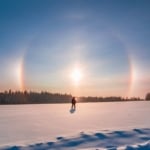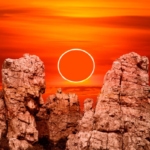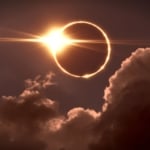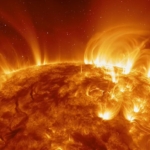Crescent Moon and Venus Dazzle In The Morning Sky: Here’s How To See Them
Set your alarms early on June 19th to be treated to a rare celestial display. Learn when and where to watch!
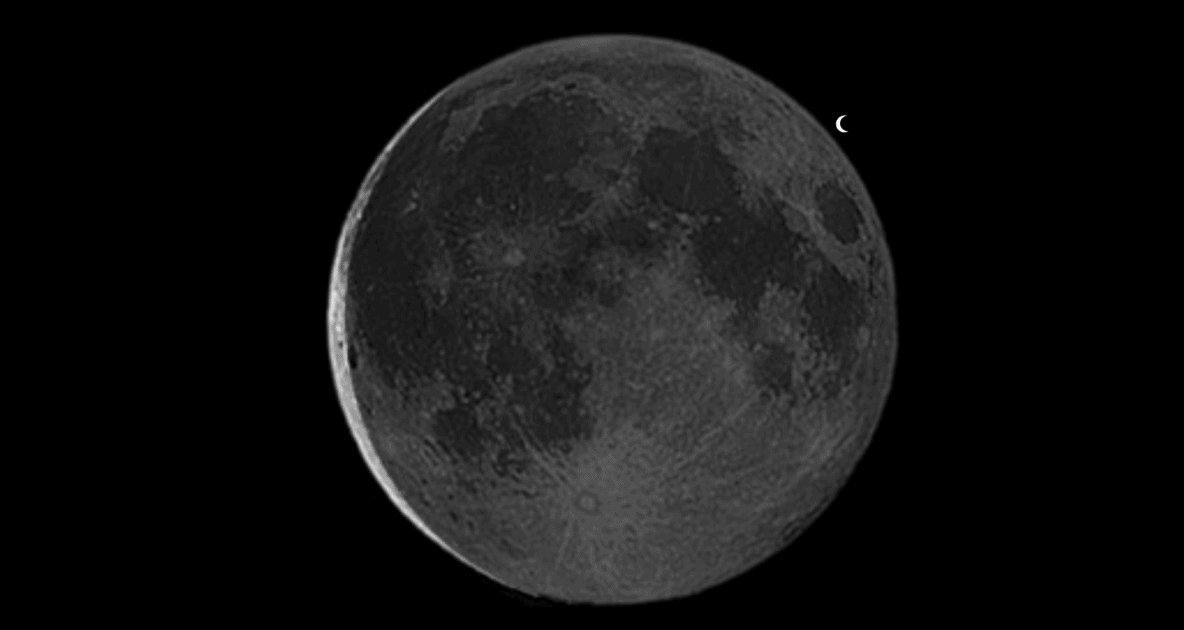
Should weather conditions be favorable, be sure to set your alarm for around 4 a.m. on Friday, June 19th and then quickly proceed to a location where you will have a clear and unobstructed view of the east-northeast horizon. You’ll be rewarded with a view of a beautiful view of an exceedingly thin crescent Moon as it rises in close proximity to Venus, the brightest planet in our sky.
Moon and Venus Occultation
For those living in northern and eastern New York State, New England, and the Canadian Maritimes, another spectacular sight will take place with these two celestial objects: as the Moon comes up above the horizon, Venus will be hidden behind it so it will not be visible (known as “occultation,” when one object in space passes in front of another) but some minutes later, Venus will dramatically emerge from the right side of the Moon’s dark limb and shine brightly.
This event can be readily seen without optical aid, however, binoculars or a telescope will give a much better view. As viewed with the unaided eye, if you imagine the Moon as the face of a clock, the emergence for most will take place near the 1 and 2 o’clock positions as measured clockwise from the top of the lunar disk.
An Extraordinary Display
As seen from the western US, Venus and the Moon will be separated by roughly 2°; from the central US they’ll be even closer, only about 1° apart.
Meanwhile, along the East Coast the gap between them will amount to less than a degree (exceedingly close).
In a dark or twilight sky, an occultation or a very close conjunction between Venus and a crescent Moon can certainly be an awe-inspiring naked-eye sight and can attract the attention of even those who do not normally look up at the sky. Early risers who are up an hour or so before sunrise, and who are unaware, will certainly notice the bright light to the upper right of the bowl of the crescent Moon; newspapers and radio stations will no doubt receive inquires of the light.
When and How To See It
First, it should be noted, that the disappearance of Venus (which occurs on the left side of the crescent Moon) will not be visible from the Northeast US because it happens when the Moon and Venus are below the horizon. Only the reappearance will be visible and that will happen shortly after the Moon itself comes above the east-northeast horizon.
Unlike a star—a point source of light, which appears to suddenly “pop-on” when it reappears from an occultation—Venus, as seen through binoculars or a small telescope, will resemble a narrow crescent, just like the Moon, and will take about 10 seconds to completely emerge into view.
From Providence, RI and Boston, MA, look to the skies at about 4:06 a.m. EDT. Across central and northern New England, the emergence of dazzling Venus will come about two or three minutes later. For those living in Canada, add an hour to correct for Atlantic Daylight Time.
If you live anywhere to the east (left) of a line running from Watertown, NY to Riverhead, NY, you will be able to enjoy a marvelous view of Venus emerging dramatically from behind the Moon’s dark limb, albeit very low above the east-northeast horizon before sunrise. Make sure in advance that you do not have any obstructions in that direction that might hide your view of the end of this “Venus eclipse” on the morning of the 19th. A predawn jaunt down to a shore location, which affords a wide-open view over the water will be best.
For most of the country, Venus has already emerged from behind the Moon by the time the Moon has risen. It will (strikingly) appear to sit just to the upper right of the Moon, albeit low on the horizon.
Is This A Rare Occurrence?
For many years, nobody had any idea as to how often events such as this occurred. An article appearing in the July 18, 1974 edition of the New York Times, noted that “although the frequency of the phenomenon has not been calculated, it is believed to be as rare an event to be visible from a given spot on earth as is a total eclipse of the Sun” (once every 360 years).
However, in a technical paper published in the Journal of the British Astronomical Association (Feb. 2011), Belgian astronomical calculator, Jean Meeus and I determined the frequency for a specific location falls within the range of (on average) once in about 21 to 31 years.
New England and the Canadian Maritimes will not have to wait as long for their opportunity. That will come on September 13, 2031.
Here’s hoping for clear skies!
Summary: Viewers in southern New England will see Venus emerge from behind the Moon’s dark limb at about 4:06 a.m. EDT on June 19th and viewers across central and northern New England will see Venus emerge two or three minutes later.

Joe Rao
Joe Rao is an esteemed astronomer who writes for Space.com, Sky & Telescope, and Natural History Magazine. Mr. Rao is a regular contributor to the Farmers' Almanac and serves as an associate lecturer for the Hayden Planetarium in New York City.


